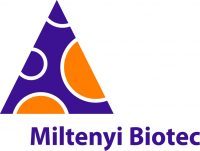CD270 Monoclonal / PE / REA275
Product Details
| Description | Clone REA275 recognizes the CD270 antigen, a type I transmembrane protein of the TNF-receptor superfamily which is also known as Herpes virus entry mediator (HVEM) or tumor necrosis factor receptor like 2 (TR2). CD270 is expressed in multiple tissues and cell lines and shows a constitutive and relatively high expression in peripheral blood T cells, B cells, monocytes, neutrophils and dendritic cells. Both human and mouse forms of CD270 can mediate entry of herpes simplex virus-1 and -2 (HSV-1 and HSV-2). CD270 transmits both activating and inhibitory signals; e.g interaction with receptors such as BTLA or CD160 attenuates TCR-mediated signaling, whereas interaction with receptor LIGHT allows co-stimulation of T and B cells. | Additional information: Clone REA275 displays negligible binding to Fc receptors. | | |
|---|---|---|
| Conjugate | PE | |
| Clone | REA275 | |
| Target Species | Mouse | |
| Applications | FC, MICS (MACSima Imaging Cyclic Staining), IF, IHC | |
| Supplier | Miltenyi Biotec | |
| Catalog # | Sign in to view product details, citations, and spectra | |
| Size | ||
| Price | ||
| Antigen | ||
| Host | ||
| Isotype |
About CD270
This gene encodes a member of the TNF (tumor necrosis factor) receptor superfamily. The encoded protein functions in signal transduction pathways that activate inflammatory and inhibitory T-cell immune response. It binds herpes simplex virus (HSV) viral envelope glycoprotein D (gD), mediating its entry into cells. Alternative splicing results in multiple transcript variants. [provided by RefSeq, Jul 2014]
This gene encodes a member of the TNF (tumor necrosis factor) receptor superfamily. The encoded protein functions in signal transduction pathways that activate inflammatory and inhibitory T-cell immune response. It binds herpes simplex virus (HSV) viral envelope glycoprotein D (gD), mediating its entry into cells. Alternative splicing results in multiple transcript variants. [provided by RefSeq, Jul 2014]
About PE
Phycoerythrin (PE, R-PE) is a red-emitting fluorescent protein-chromophore complex that can be excited the 488-nm blue, 532-nm green, or 561-nm yellow-green laser with increasing efficiency and captured with a 586/14 nm bandpass filter. PE has an excitation peak at 565 nm and an emission peak at 578 nm. PE is 240kD in size and has an extinction coefficient of ~2x10^6 which makes it one of the brightest fluorophores available and a potent donor upon which to build tandem fluorophores with longer Stoke's Shifts.
Phycoerythrin (PE, R-PE) is a red-emitting fluorescent protein-chromophore complex that can be excited the 488-nm blue, 532-nm green, or 561-nm yellow-green laser with increasing efficiency and captured with a 586/14 nm bandpass filter. PE has an excitation peak at 565 nm and an emission peak at 578 nm. PE is 240kD in size and has an extinction coefficient of ~2x10^6 which makes it one of the brightest fluorophores available and a potent donor upon which to build tandem fluorophores with longer Stoke's Shifts.
Experiment Design Tools
Panel Builders
Looking to design a Microscopy or Flow Cytometry experiment?
Validation References
| PMID 9153189 | |
|---|---|
| PMID 9162061 | |
| PMID 22865366 | |
| Additional Sources |

|
Reviews & Ratings
| Reviews |
|---|
Looking for more options?
482 CD270 antibodies from over 28 suppliers available with over 58 conjugates.




